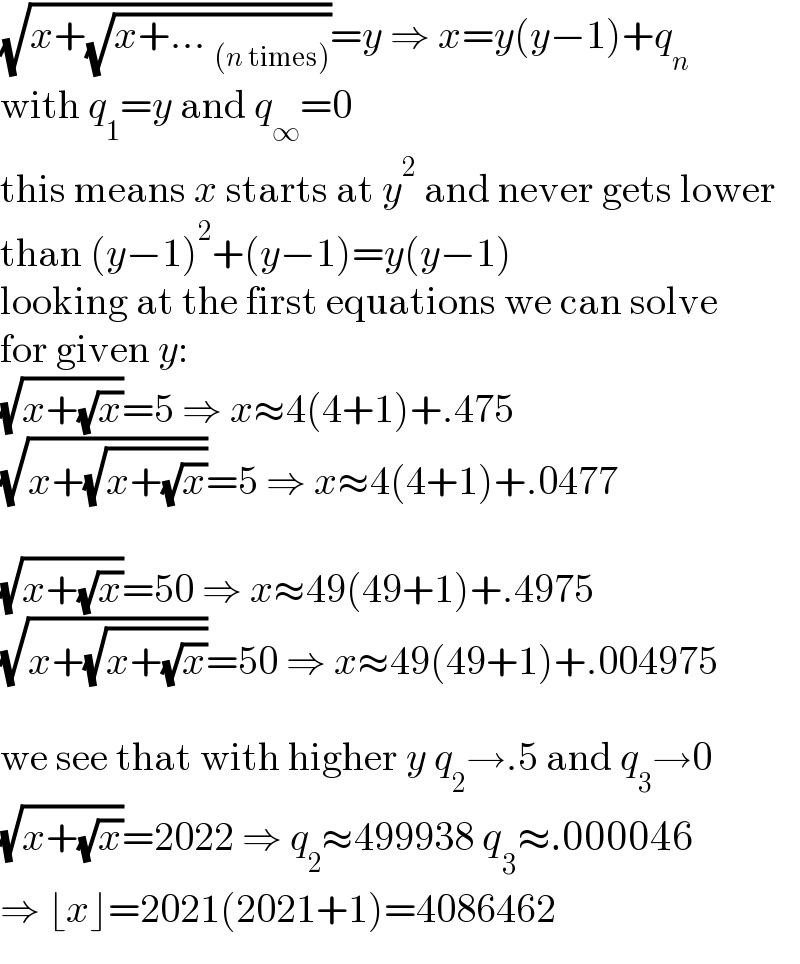
Question and Answers Forum
Question Number 177030 by mr W last updated on 01/Oct/22
![if (√(x+(√(x+(√(x+(√(x+(√x)))))))))=2022 find [x]=?](Q177030.png)
Answered by TheHoneyCat last updated on 30/Sep/22

Commented by mr W last updated on 01/Oct/22
![thanks sir! the LHS is an expression with exactly 5 square roots, not infinite ones. btw, the question is not to find x, but to find [x]. as you said, it′s not solvable for x, but maybe solvable for [x], the integer part of x.](Q177054.png)
Commented by Tawa11 last updated on 02/Oct/22

Answered by Frix last updated on 30/Sep/22

Commented by mr W last updated on 30/Sep/22

Answered by mr W last updated on 01/Oct/22
![we have (√(x+(√x)))_(2 times roots) ≤(√(x+(√(x+(√(x+...+(√x)))))))_(n times roots) <(√(x+(√(x+(√(x+(√(x+...))))))))_(infinite times roots) with n∈N and n≥2 if (√(x_2 +(√x_2 )))=2022 and (√(x_n +(√(x_n +(√(x_n +...+(√x_n )))))))=2022 and (√(x_∞ +(√(x_∞ +(√(x_∞ +...))))))=2022 then we have x_∞ <x_n ≤x_2 (√(x_2 +(√x_2 )))=2022 x_2 +(√x_2 )=2022^2 x_2 =(2022^2 −x_2 )^2 x_2 =2022^4 −2×2022^2 x_2 +x_2 ^2 x_2 ^2 −(2×2022^2 +1)x_2 +2022^4 =0 x_2 =((2×2022^2 +1−(√((2×2022^2 +1)^2 −4×2022^4 )))/2) =((2×2022^2 +1−(√(4×2022^2 +1)))/2) <((2×2022^2 +1−(√(4×2022^2 )))/2) =((2×2022^2 +1−2×2022)/2) =2022^2 −2022+(1/2) =2021×2022+(1/2) (√(x_∞ +2022))=2022 ⇒x_∞ =2022^2 −2022=2021×2022 from x_∞ <x_n ≤x_2 we get 2021×2022<x_n <2021×2022+(1/2) that means [x_n ]=2021×2022=4086462 generally if (√(x+(√(x+(√(x+...+(√x)))))))_(2 or more, but finite roots) =k ∈ N ∧ k≥1 then [x]=(k−1)k](Q177104.png)
